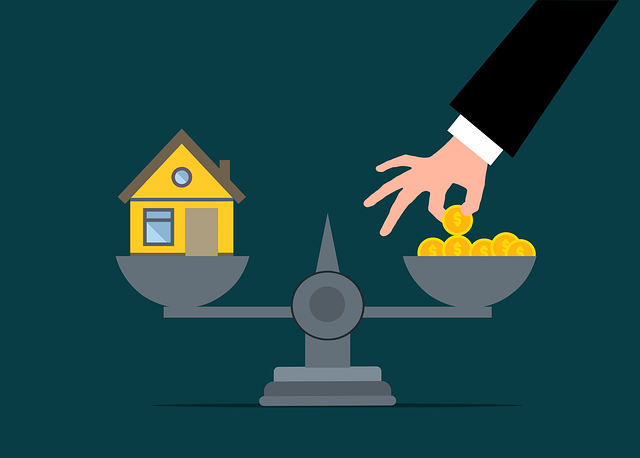Debt consolidation simplifies managing multiple loans by combining them into one with improved terms, offering lower interest rates and extended repayment periods. It streamlines budgeting, reduces administrative burden, and saves money on interest expenses over time. Before applying, assess eligibility based on credit history, current debt, and income levels; choose from secured, unsecured, or balance transfer options; and ensure responsible financial management post-consolidation to maximize savings.
Can one loan truly simplify your finances? Discover how debt consolidation can transform your financial landscape. This comprehensive guide explores the power of consolidating debt into a single, manageable loan. Learn about the advantages, from reduced interest rates to improved cash flow. We’ll break down eligibility criteria and various loan types, guiding you through the process step-by-step. Additionally, find expert tips for managing your finances effectively post-consolidation. Take control of your debt with this insightful overview on consolidating debt into one loan.
- Understanding Debt Consolidation: A Comprehensive Overview
- Advantages of Consolidating Debt Into One Loan
- Evaluating Eligibility and Requirements for Debt Consolidation Loans
- Different Types of Debt Consolidation Loan Options
- The Process of Consolidating Debt: Step-by-Step Guide
- Managing Your Finances Post-Debt Consolidation: Tips and Best Practices
Understanding Debt Consolidation: A Comprehensive Overview

Debt consolidation involves combining multiple debts into one single loan with a lower interest rate and potentially longer repayment period. This strategy allows borrowers to simplify their financial obligations by reducing the number of payments they need to make each month, making it easier to manage their finances. By consolidating debt into one loan, individuals can streamline their budgeting process and gain better control over their spending.
The process typically entails applying for a new loan that pays off all existing debts, including credit cards, personal loans, and even past-due bills. The borrower then makes regular payments on the consolidated loan, which can be more affordable than the sum of individual debt repayments. This method can help borrowers avoid missed payments, reduce stress related to multiple due dates, and potentially save money by lowering their overall interest expenses over time.
Advantages of Consolidating Debt Into One Loan

Combining multiple debts into one loan offers several significant advantages that can simplify and improve your financial situation. Firstly, it streamlines repayment by consolidating various payments into a single, manageable schedule. This simplification reduces the administrative burden of keeping track of multiple loans, deadlines, and interest rates. With just one loan to focus on, you’ll save time and effort in managing your finances.
Moreover, consolidations often result in lower monthly payments and total interest costs over the life of the loan. By negotiating a single, larger loan with more favorable terms, borrowers can escape the high-interest rates associated with multiple debts. This is particularly beneficial for those carrying credit card debt or student loans with varying interest rates, as it simplifies repayment and saves money in the long run.
Evaluating Eligibility and Requirements for Debt Consolidation Loans

Before considering a debt consolidation loan, it’s crucial to evaluate your eligibility and understand the requirements set by lenders. Not everyone qualifies for this type of loan, as it depends on various factors such as credit history, current debt obligations, and income levels. Lenders will assess your financial situation to determine if consolidating your debts into one loan is a feasible option. A strong credit score typically improves your chances, as it indicates responsible borrowing and repayment behavior.
Additionally, lenders will require detailed information about your existing debts, including balances and interest rates. This evaluation helps in tailoring the consolidation loan to suit your needs, offering lower interest rates and more manageable monthly payments. It’s essential to disclose all relevant financial information accurately to ensure a successful application and avoid potential delays or rejection.
Different Types of Debt Consolidation Loan Options

When considering a debt consolidation loan, it’s important to understand that this strategic move involves repackaging multiple debts into a single, more manageable loan. This simplifies repayment by replacing several bills with one fixed monthly payment. There are various types of consolidation loans designed to cater to different financial needs and situations. For instance, secured loans use an asset like your home or car as collateral, often resulting in lower interest rates but requiring caution as you risk losing the asset if you default. Unsecured loans, on the other hand, don’t require collateral but usually come with higher interest rates due to the increased risk for lenders.
Another popular option is a balance transfer credit card, which allows you to consolidate debts by transferring them to a new card with potentially lower interest rates for a promotional period. This can provide breathing space but requires discipline to avoid accruing fresh debt. Additionally, there are government-backed loans like Direct Consolidation Loans (DCLs) that offer reasonable terms and rates, especially for federal student loans. Each option has its pros and cons, so evaluating your financial health and goals is crucial before deciding on the best way to consolidate your debts into a single loan.
The Process of Consolidating Debt: Step-by-Step Guide

Debt consolidation is a strategic approach to simplifying your finances by combining multiple loans into one. This process can be particularly beneficial if you have several high-interest debts or varying repayment terms, making it challenging to manage. Here’s a step-by-step guide on how to consolidate debt into one loan:
1. Evaluate Your Debt: Start by listing all your existing debts, including the principal amount, interest rates, and minimum monthly payments. Calculate your total monthly debt obligations and assess if consolidation is feasible based on your income and financial goals.
2. Explore Loan Options: Research different types of loans designed for debt consolidation, such as personal loans or home equity loans/lines of credit. Compare interest rates, terms, and repayment options from various lenders to find the most suitable loan for your situation. Online platforms can simplify this process by allowing you to compare offers side by side.
3. Choose a Loan Lender: Select a reputable lender that offers competitive rates and flexible terms. Ensure they have a solid track record and positive customer reviews. This decision is crucial as it will impact the success and cost-effectiveness of your consolidation journey.
4. Apply for the Loan: Gather necessary documents, such as tax returns, proof of income, and identification. Submit an application for the chosen loan, providing accurate financial information. The lender will review your application and, if approved, extend a loan offer with specific terms and conditions.
5. Repay Your Debts: Once the consolidation loan is approved, use the funds to pay off all your existing debts in full. This step eliminates multiple monthly payments, simplifying your cash flow management. Ensure you close the old accounts to avoid any further charges or interest accrual.
Managing Your Finances Post-Debt Consolidation: Tips and Best Practices

After successfully consolidating your debt into one loan, it’s crucial to adopt best practices for managing your finances moving forward. The first step is to create and stick to a realistic budget. This involves tracking your income and expenses, prioritizing essential costs, and allocating funds for repayment. Many find it helpful to set aside an extra portion of their monthly income towards debt payoff, accelerating their consolidation savings.
Additionally, staying disciplined with financial management means avoiding new debts whenever possible. This might mean curbing unnecessary spending or exploring options like a secured credit card to build positive credit history. Regularly reviewing your credit report can help ensure accuracy and serve as a reminder of your progress in repaying the consolidated loan.















